

Contributor
- Topics: Archive
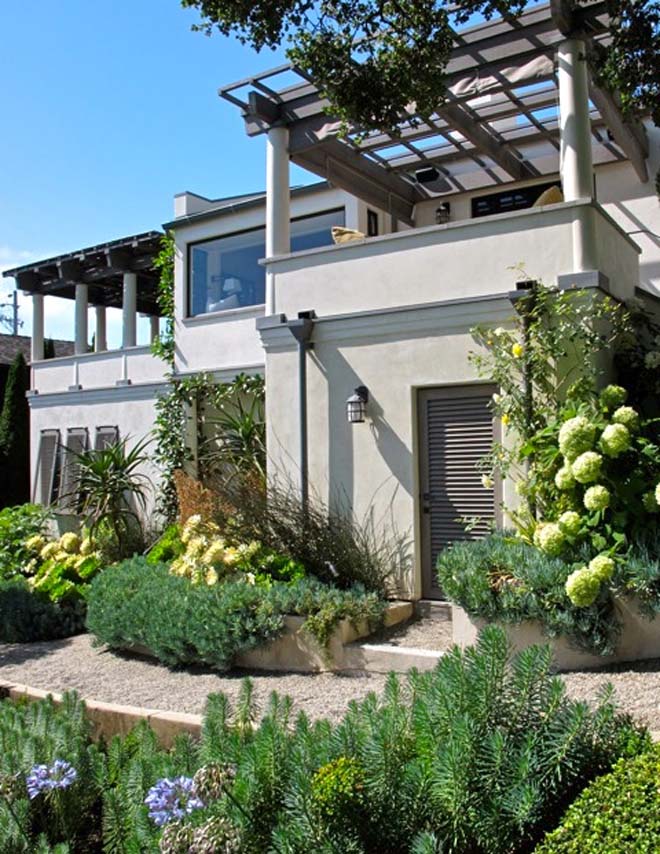
The Belvedere Island home of Paul Vincent Wiseman and Richard Neil Snyder is impossibly wonderful. Built in 1913 by Florence Nightingale Ward, the lovingly restored Mediterranean-style villa is located in beautiful Marin County, California. With a spectacular view of San Francisco Bay and gardens filled with artful, water-wise plantings, indeed, what is not to love?
Californians tend to take their weather for granted. True mediterranean climate regions exist in only five places in the world: the rim of the Mediterranean Sea, the largest of these regions and the namesake of this weather pattern, much of California, areas of southwestern Australia, the tip of South Africa, and the central coast of Chile.
Most of the San Francisco Bay Area enjoys what is arguably the best climate pattern in the world: warm-summer mediterranean mitigated by the cooling effect of the nearby ocean (Köppen Csb). According to the Köppen-Geiger climate
classification system, the most common mediterranean climate pattern consists of mild, wet winters and hot, dry summers with very little, if any, rainfall (Köppen Csa). A further sub-designation, Köppen Csbn, identifies coastal areas that experience summer fog. Summer fog drifts past, and occasionally over, Belvedere Island on its way to the East Bay leaving the island relatively fog-free compared to San Francisco and straddling climates Csb and Csbn.
Climate Classification
The Köppen-Geiger climate classification system consists of five main climate groups with several types and subtypes. Each climate is identified by a two- to four-letter code.
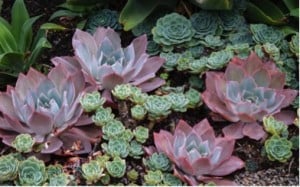
Mild temperate climates, including mediterranean climates, are in group C. Group C is characterized by summer temperatures above 50°F and winter temperatures above 27°F. The second letter in the climate classification code describes a region’s precipitation pattern. The type “s” climate has dry summers that receive less than one-third of the precipitation that occurs in the wettest winter month. The third letter in the classification system indicates the amount of summer heat in a region. In a subtype “a” climate, the warmest month averages above 72°F and has at least four months over 50°F. The subtype “b” climate averages less than 72°F during the warmest month, but has at least four months over 50°F.
The Csa and Csb mediterranean climates occur between latitudes 30° and 45°, on the western side of continents in both the northern and southern hemispheres.
Wladimir Köppen, a Russian/German botanist and climatologist, first published his climate classification system in 1884. His system was based on vegetation distribution. The refined system and map that he published with climatologist Rudolf Geiger is one of the world’s most widely used climate classification systems.
It was the absence of heavy fog that attracted San Franciscans like Florence Nightingale Ward to build summer homes on
Belvedere Island at the turn of the last century. A short ferry ride across the bay allowed escape from what Mark Twain is famously misattributed as saying, “The coldest winter I ever spent was summer in San Francisco.”
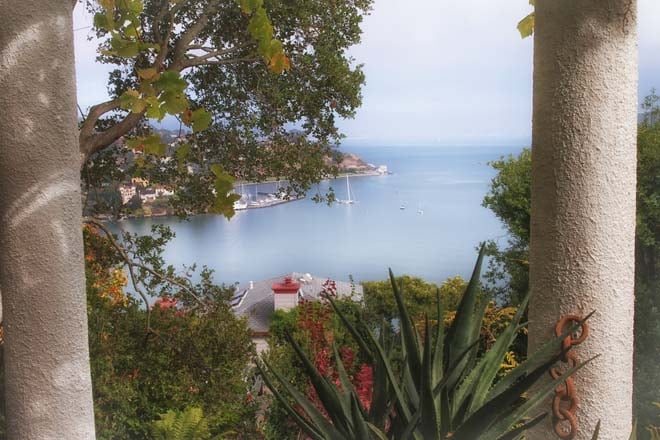
In the early 1900s, it must have been breathtaking to climb to the top of Belvedere Island and take in the sweep of the San Francisco Bay in its unspoiled splendor. Even with the extensive development that has since occurred, the Wiseman/Snyder property has a front row seat to one of the most scenic cityscapes in the world with stunning views of Tiburon and the East Bay to the east; Angel Island, San Francisco, and the Bay Bridge to the south; and Sausalito and the Golden Gate Bridge to the west.
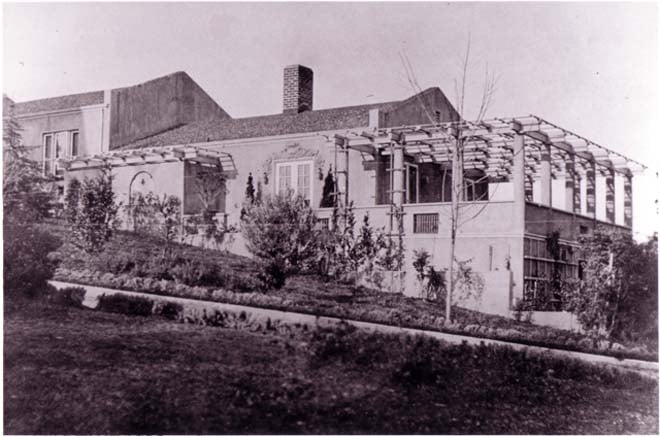
Beginnings
Florence Nightingale Ward was born in San Francisco in 1860; her mother named her after the famous English woman responsible for the foundation for professional nursing. We all navigate unconscious paths lit by the lamps of our parents’ psyches, but Florence must have had an uncommonly bright beam illuminating the way to her life’s calling. With her mother’s enlightened encouragement, Florence became one of only a handful of gifted women in her era to seek higher education.
As a young adult, Florence left the Bay Area to attend school in New York and eventually made four trips to Europe to study medicine. She established a medical practice in San Francisco in 1888, a time when few women studied medicine, much less worked outside of the home. Florence further distinguished herself by becoming one of the first women to be elected to membership in the American Academy of Surgeons.
While in Europe, Florence fell in love with Mediterranean architecture. In 1908, at the age of 48, she divorced her unfaithful husband (another unusual act for the time), and decided to build a Mediterranean-style villa on Belvedere Island as a getaway for herself and her two daughters. The home was completed in 1913.
The provenance of the home’s architecture remains a tantalizing mystery. It is rumored that Julia Morgan helped Florence design her home. The two women knew one another and it is a documented fact that the famous architect worked for the Ward family in San Francisco. Contributing further circumstantial evidence to Morgan’s involvement, Gordon Blanding, one of the wealthiest men in California, commissioned Morgan to build a home for him on Belvedere, a stone’s throw from Florence’s property, during the time when both structures were being built.

One thing is crystal clear: Florence loved nature and was a devoted gardener. This beautifully written passage, quoted from a family remembrance journal, attests to this fact.
“Across the bay in Belvedere was a little house lying close to the hilltop and lost under the crouching oaks. Here she spent weekends and odd mornings and evenings during the summer. Even in winter, when the cottage was tightly shuttered and soaked amber leaves covered the paths, when few ventured through the muddy lanes, she would spend her holidays tramping the wet woods and breathing deeply of the moist fragrant earth. When the year was at its height she was out early and long after sundown with the Italian gardener, listening to his talk of beets and carrots, seeds and snails. Through clouds of color they were in sympathetic converse; foxglove and hydrangea, zinnia and hollyhocks, starring the deeply sloping hillside.” (For the Children, p. 19)
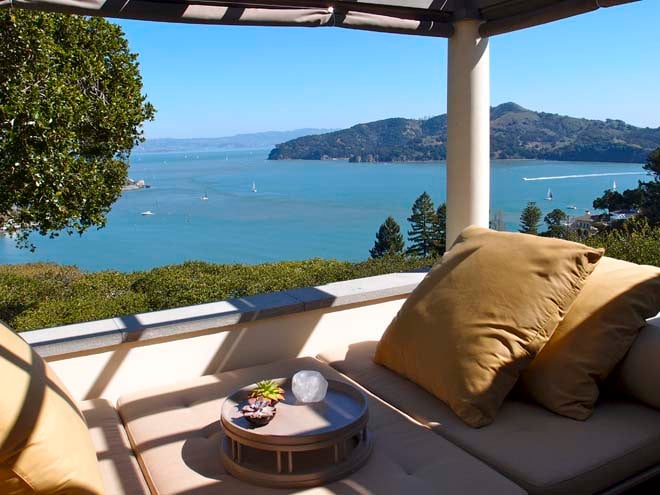
New beginnings
Sometimes homes get lucky and are purchased by understanding new owners. For internationally acclaimed interior designer Paul Wiseman it was love at first sight. His partner, Richard Snyder, likes to joke that when they took possession in 1998, the Belvedere house was standing by virtue of “termites holding hands and thirty coats of paint.” The couple lived in the home for nine years, learning its secrets and planning, before moving to Mill Valley for two years while the house underwent a major restoration. Now beautifully rebuilt and modernized, the house retains its original footprint and character.

Ninety years after being built, nothing remained of the original garden. Even if elements of Florence’s garden had weathered the years, changing times require different gardening approaches. California’s water has become expensive and more precious, encouraging thoughtful gardeners to choose water-wise plantings. Paul has brought his design talents and sensibilities to the property’s landscape where he has created a happy harmony of beauty and practicality with succulents. Other than the occasional foraging deer, the drought-tolerant plants thrive in Belvedere Island’s wet, frost-free winters and balmy, warm summers and, in the hands of this gifted designer, lend themselves to wonderful vignettes of color and texture.
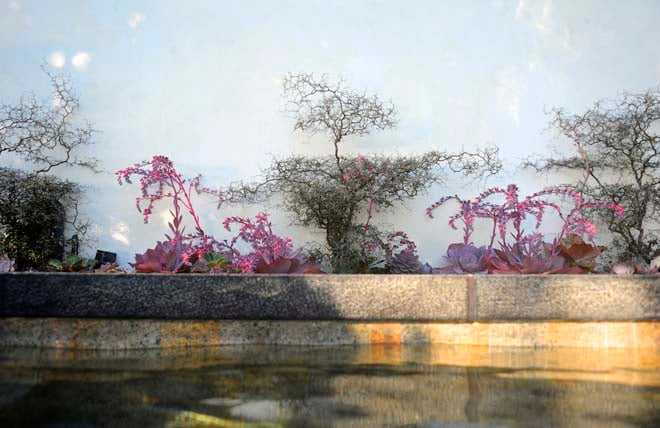
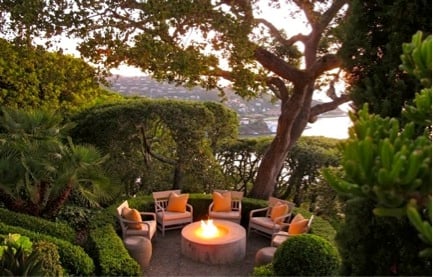
Along the pathway that curves upward from the street below to the home’s original entrance, Paul has created an outdoor seating area with a fire pit for warming cool Bay Area evenings. Overlooking the fire pit, a stone spa accented with three antique urns beckons, its serene beauty promising deep relaxation in warm waters. The house, wisely sited slightly below the crest of the sloping hillside property, allows afternoon winds to sail over the house, not through the loggia.
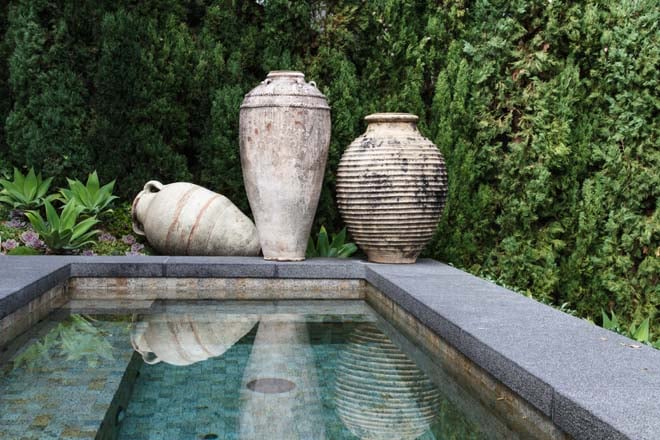
Original to the landscape, another curving garden path leads from the house to a grapevine-draped pergola located partway down the hill. Florence’s winding hillside paths may have been inspired by a contemporary project started across the bay in Berkeley in 1898. The Hillside Club, founded by Charles Augustus Keeler and architect Bernard Maybeck, was having a big impact on the development of the Berkeley hills. This enlightened “improvement society” was wonderfully progressive and years ahead of its time.
“Under the guidance of this organization, its members, many of whom were associated with the University of California, completely transformed the existing landscape of softly contoured, grass-covered hills scattered with oak trees into a wooded hillside of mixed exotic trees, within which carefully sited shingled houses commanded panoramic views of San Francisco Bay. This landscape was in effect a continuous public garden punctuated by a series of private gardens… The irregular blocks of houses were stepped back into the hillside slopes, and a rambling network of paths threaded through the center of each block. Existing trees and rock outcrops were carefully retained, and the local stone was used to pave many garden paths and build low retaining walls… Winding paths created a sense of intimacy and mystery and made each individual garden seem larger.” (Streatfield, p. 70)
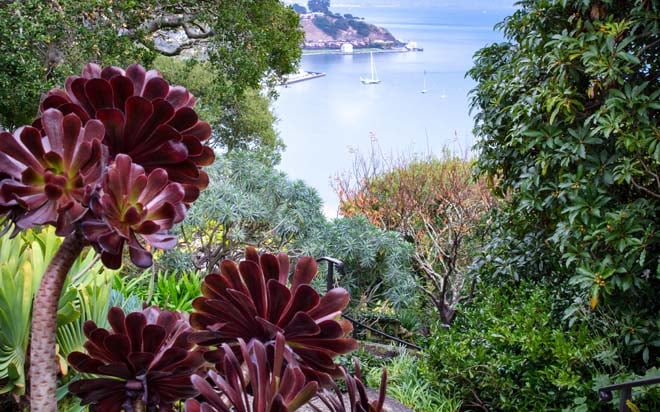
To enlarge his garden and create just such a feeling of intimacy and mystery, Paul has continued Florence’s path beyond the pergola, creating a walkway that meanders across and down the hillside. A peaceful meditation site located at a break in the trees reveals a slice of the bay. From this vantage point, Paul can contemplate the beauty of Belvedere and give thanks for Florence Nightingale Ward’s good energy and vision, which suffuses the property even now.
“Usually her skirt was pinned to avoid the dust and in the curve of her arm she carried a basket or bowl. There were berries to be gathered in the orchard plot and perhaps a handful of peaches or plums for her sister in the adjoining garden. And she never reached the house again without friendly human talk across a hedge or by the tall green gate… Countless times came these words like song to her lips: ‘I am so glad to be alive.’” (For the Children, p. 19)
[sidebar]
For the Children: That They May Have Knowledge of Their Grandmother Florence Nightingale Ward, M.D. Privately printed by
the Ward family, 1926, San Francisco
California Gardens: Creating a New Eden David C. Streatfield, 1994, New York: Abbeville Press, 1994[/sidebar]
Share:
Social Media
Garden Futurist Podcast
Most Popular
Videos
Topics
Related Posts

Low Maintenance Gardens – Better for Pollinators and People
Autumn 2022 “I come out every day. It’s therapy, my meditation.” Janet’s young garden transformed from overgrown, invasive plants to mostly natives. The dailiness of

Invasive Plants Are Still Being Sold: Preventing Noxious Weeds in Your Landscape
Autumn 2022 With so many beautiful ornamental plant species and cultivars throughout California and the Pacific Northwest, how do you decide which ones to include

Garden Design in Steppe with Transforming Landscapes with Garden Futurist Emmanuel Didier
Summer 2022 Listen to full Garden Futurist: Episode XVII podcast here. Emmanuel Didier, Principal and Creative Director at Didier Design Studio is a leading figure
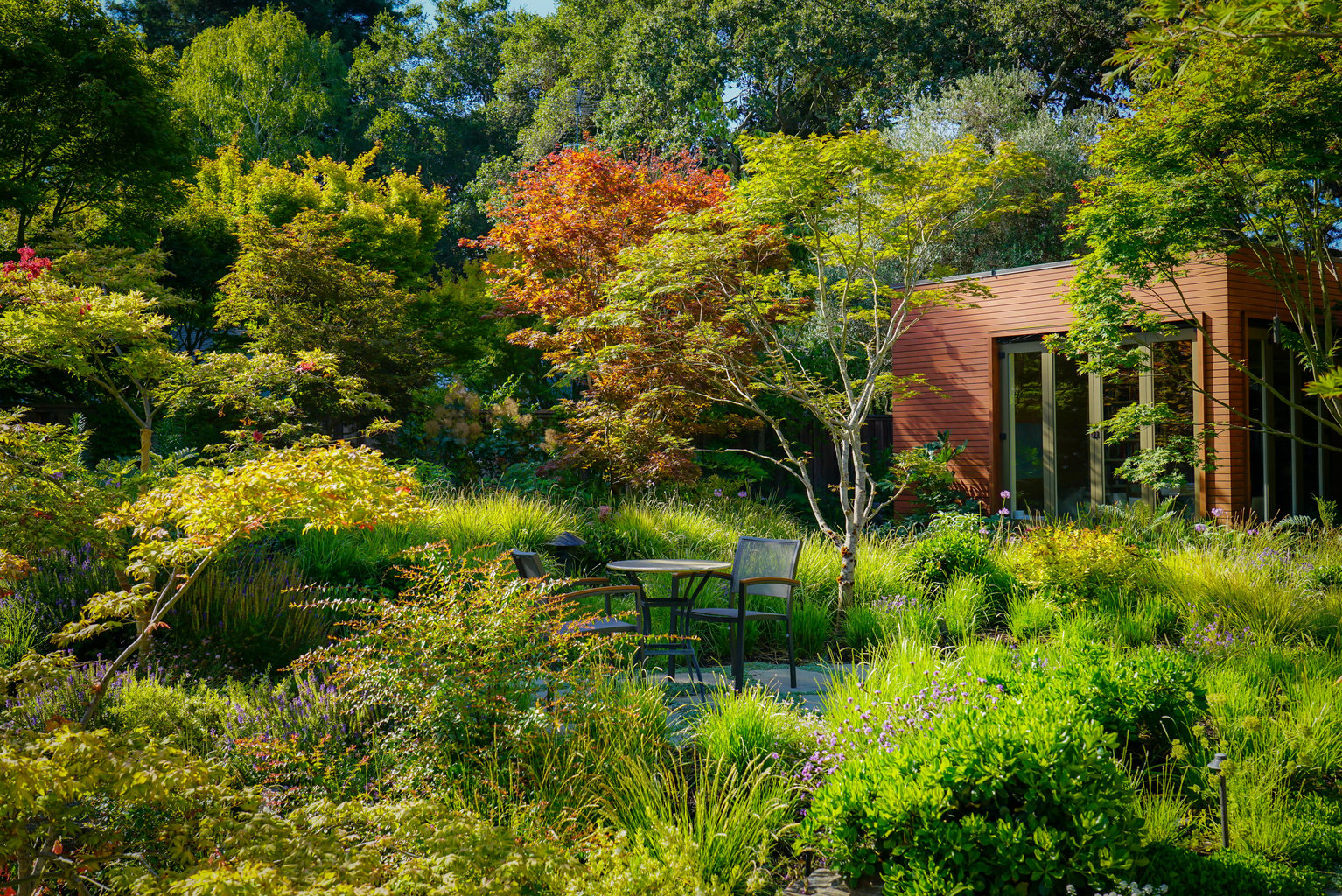
Seslerias: Versatile Groundcover Meadow Grasses
Summer 2022 Without question, the most beautiful and versatile of all the groundcover meadow grasses are the moor grasses (Sesleria). Moor grasses tick off all


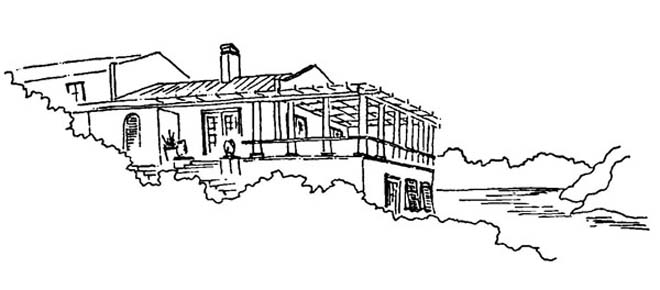







Responses